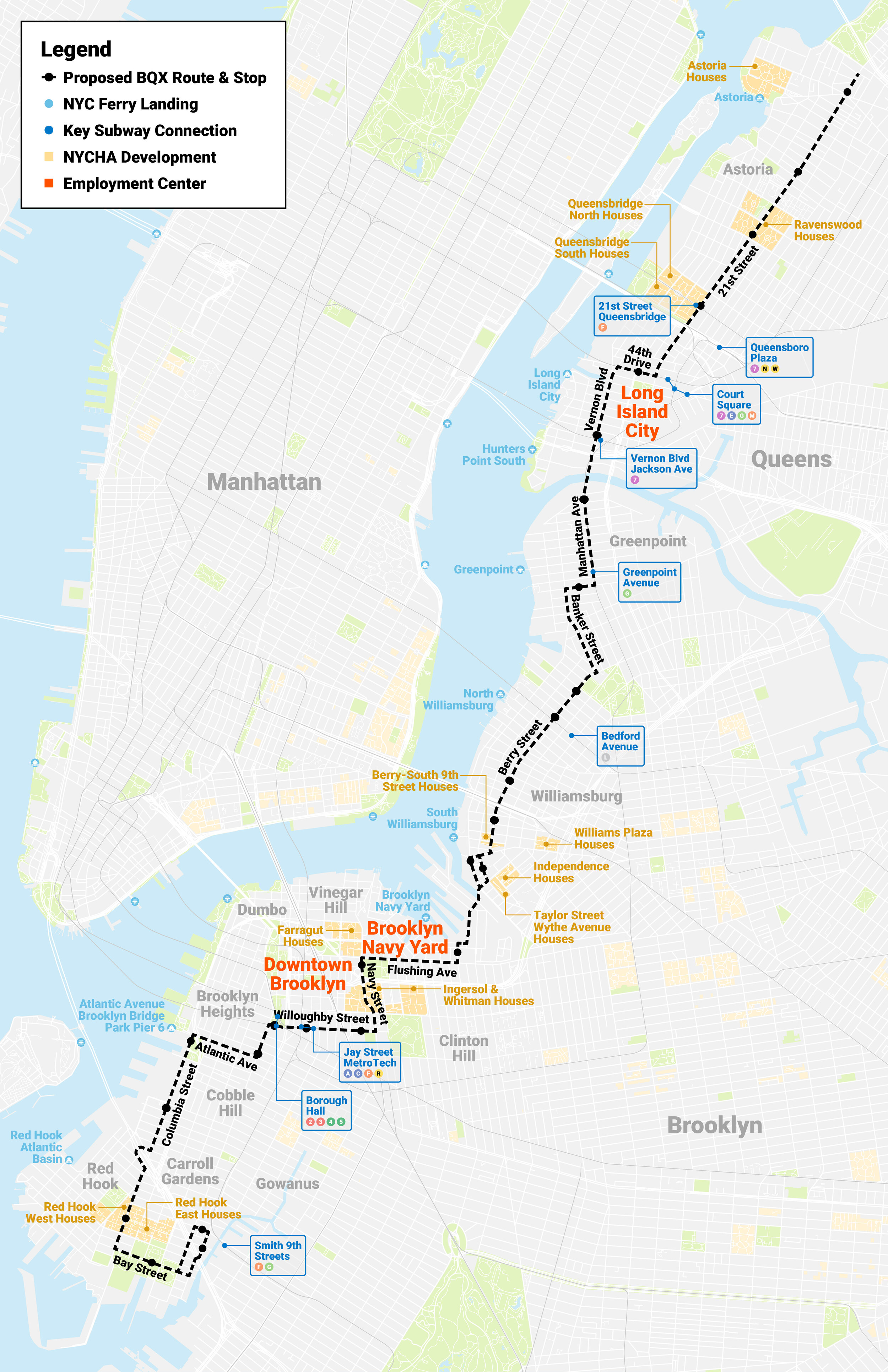What is the BQX?
The Brooklyn Queens Connector (BQX) is a City investment to better connect New Yorkers who have limited transit options to where they need to go. The BQX is a proposed streetcar that will connect a dozen neighborhoods along an 11-mile corridor from Red Hook to Astoria. The BQX would be efficient, accessible, resilient and sustainable, and would improve streets in neighborhoods along the corridor.
How would the BQX benefit New Yorkers?
BQX would improve transportation mobility for New Yorkers with limited transit options and introduce a new north-south transit connection between Brooklyn and Queens.
BQX would provide a new transit option for New Yorkers living and working in subway deserts - areas in Astoria, Brooklyn Navy Yard, and Red Hook where subway service is more than a half-mile walk away.
BQX would reduce commute times for people traveling along the corridor and making connections to destinations outside the corridor.

